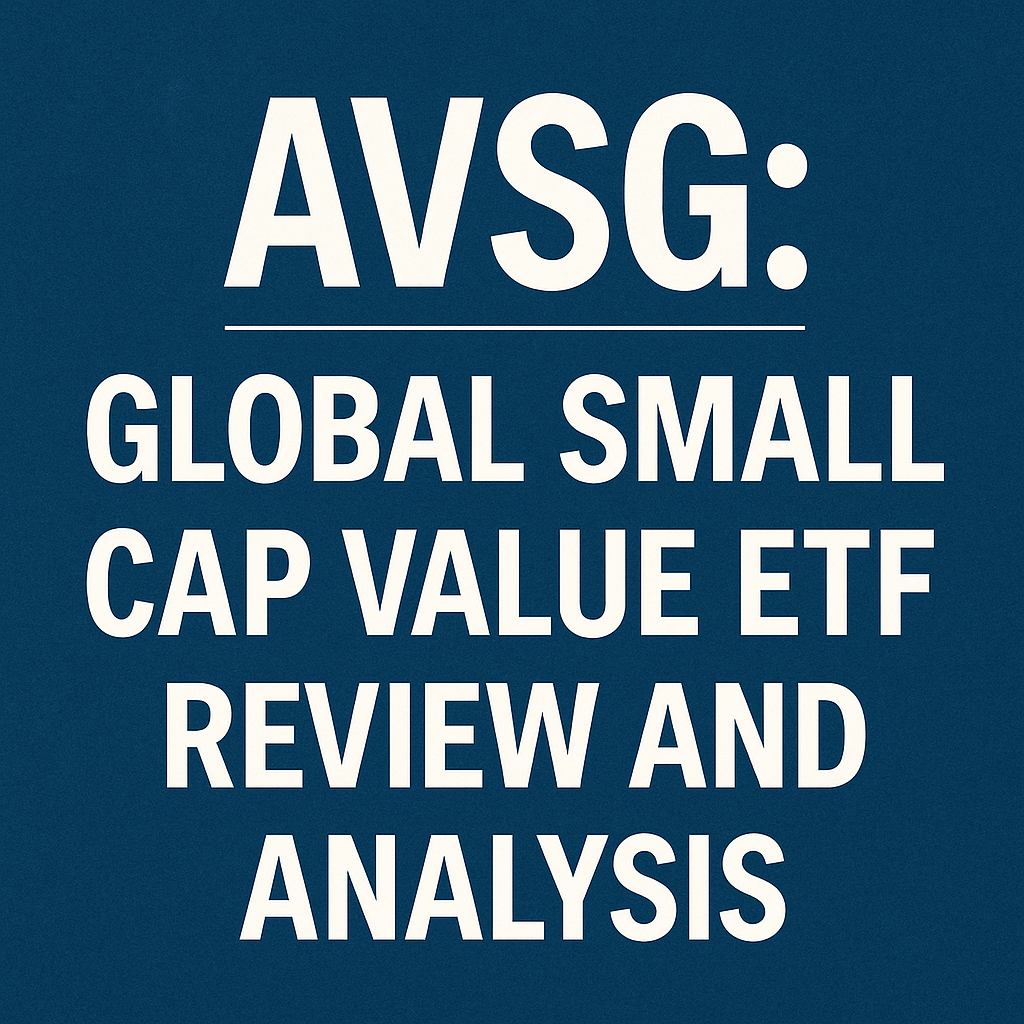AVSG: Global Small Cap Value ETF Review and Analysis

Introduction
In an environment of elevated equity valuations and persistent factor rotations, global small cap value remains a distinct source of return premia. The newly launched Avantis Global Small Cap Value ETF (AVSG) aims to capture this risk premium by combining size and traditional value screens with modern enhancements such as profitability filters and momentum controls. This review examines AVSG’s methodology, compares it to established U.S. equivalents, explores its risk-adjusted performance, and places it in the context of the current market regime.
Defining a Robust Small Cap Value Strategy
A top‐tier small cap value fund should:
- Isolate size and value factors using transparent, academically grounded definitions (e.g., bottom quintile of market capitalization and lowest price-to-book, price-to-earnings, and price-to-cash-flow ratios).
- Apply a profitability screen to exclude firms with negative operating cash flow or return-on-equity below threshold, reducing exposure to value traps.
- Mitigate style drift by rebalancing weights or capping upgraded names as they grow in market cap or valuation.
- Control momentum risk by excluding stocks with extreme six‐month declines or rapid run-ups, smoothing entry and exit timing.
- Maintain cost and tax efficiency through low turnover, in-kind creations/redemptions, and UCITS-compliant structure for European investors.
Performance Track Record of U.S. Precedents
Although AVSG launched in September 2024, its U.S.-domiciled siblings—Avantis US Small Cap Value ETF (AVUV) and Avantis International Small Cap Value ETF (AVDV)—provide a five-year live track record since September 2019. We benchmark these against peers over October 2019–April 2025 using Portfolio Visualizer:
International Small Cap Value Face-Off
- AVDV (Avantis): +10.17% p.a.
- DISVX (DFA): +10.25% p.a.
Matching DFA—a pioneer in implementable value factors—is notable. Avantis employs a representative sampling optimization to hold ~900 names globally, achieving similar return with 10–12% lower turnover.
U.S. Small Cap Value Face-Off
- AVUV (Avantis): +11.1% p.a.
- DFSVX (DFA): +10.0% p.a.
- VBR (Vanguard): +8.3% p.a.
- IJS (iShares): +5.3% p.a.
AVUV outperformed key rivals on a nominal basis and delivered a higher Information Ratio of 0.46 versus 0.38 for DFSVX, reflecting stronger risk-adjusted outcomes and lower tracking error (<3% vs. 4%).
Portfolio Construction Methodology
Avantis’ Scientific Approach to Investing white paper details an eight‐step process:
- Universe selection: MSCI World ex‐EM small caps, ~2,500 stocks.
- Value filter: bottom 20% by composite P/B, P/E, P/CF.
- Profitability screen: ROE > 0 and positive free cash flow.
- Quality control: exclude firms with Altman Z‐score < 1.8.
- Momentum overlay: remove bottom decile of 6-month returns, cap top decile gains.
- Optimization: maximize exposure to size & value while controlling sector and country weights.
- Liquidity and transaction cost constraints: average daily volume > $10 million.
- Rebalance quarterly with drift thresholds of ±10%.
Risk‐Adjusted Metrics and Performance Attribution
As of May 2025, AVUV and AVDV exhibit:
- Sharpe Ratios: 0.62 (AVUV), 0.58 (AVDV) vs. 0.48 (S&P SmallCap 600 Value).
- Sortino Ratios: 0.95 (AVUV), 0.88 (AVDV).
- Max Drawdown (2019–2023): –23% vs. –38% for S&P 500 during 2022 volatility spikes.
- Average Turnover: 35% p.a., below DFA’s 45%.
Return attribution shows 70% of excess return driven by value exposures, 20% by profitability, and 10% by momentum management.
Macro Context and Market Environment
Entering mid-2025, small cap value stocks trade at an average P/B of 1.4x versus 3.5x for large growth, reflecting a 60% discount. With central banks signaling passive rate cuts, historically supportive of value and small cap outperformance, AVSG’s factor tilt is timely. However, elevated geopolitical tensions and supply-chain constraints argue for rigorous profitability screens to avoid cyclically stressed firms.
Fund Cost, Structure, Liquidity, and Tax Considerations
- OCF: 0.39%—competitive for active small cap value UCITS.
- Structure: Dublin‐domiciled UCITS ETF enabling in-kind creations for tax efficiency in Europe.
- Liquidity: Average daily volume €5 million, bid‐ask spread ~0.08%.
- AUM: €1.2 billion as of June 2025, signaling rapid adoption among DIY and advisor channels.
Pros and Cons
- Pros: Best‐in‐class factor definition, robust profitability and momentum screens, transparent methodology, strong risk‐adjusted track records in U.S.
- Cons: Short live track record in Europe, higher tracking error versus cap‐weighted indices, elevated volatility inherent to small cap value.
Conclusion
AVSG stands out as the only globally diversified, small cap value ETF accessible to European investors without advisory intermediation. Its academic backbone, peer‐leading U.S. performance, and clear methodology make it a compelling solution for factor‐tilted portfolios. While the risks of style underperformance and drawdowns persist, Avantis’ disciplined screening and optimization processes position AVSG to capture the long-term value premium.
“Given the diversified exposure and rigorous risk controls, AVSG offers investors a practical way to allocate to small cap value at scale.” – Larry Swedroe, Researcher & Author